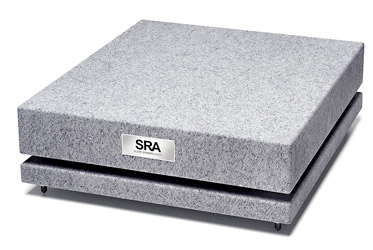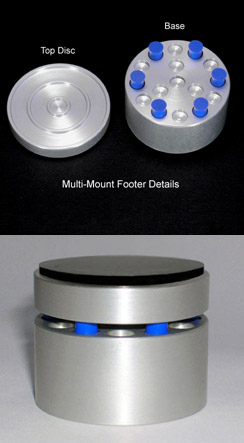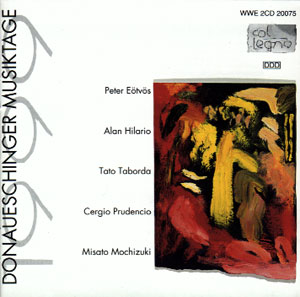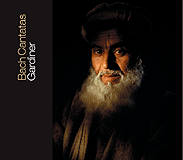Random Noise 02
The hai-fai egret’s mating call: Tweak! Tweak! Tweako! Tweak!
If the gentle reader regards acoustic-isolation underpinnings as audiophile hooey, he or she is advised to skip ahead to “Recommended recordings.” But if, like me, the gentle reader thinks they’re effective, he or she may find the following of interest. (The “he or she” bit falls under the heading of editorial etiquette. My guess is that throughout audio journalism, Internet and print, female readers are one per thousand, and that, I further suspect, is a generous ratio. Ladies, if I miscalculate, email me in your smothering numbers. I’ll acknowledge my error.)

Anyway, before we get to Joe Ciulla’s Multi-Mount Footer (henceforward MMF), let’s begin with Kevin Tellekamp’s Silent Running Audio isolation platforms (www.silentrunningaudio.com). The relationship will soon become clear. Kevin’s component-specific VR and Ohio-Class platforms are as beautifully made as anything in high-end audio. The man is an avid craftsman, and, more significantly, a noise-suppression expert. His company’s name alludes to Kevin’s background in materials applications for martial stealth. That’s martial, not marital. Marital stealth is another matter entirely. When I sold my Mark Levinson 33H mono amps, a pair of SRA VR platforms went with them: matte-black, as elegantly finished as a Wilson speaker (and that’s saying something), and, to repeat, component-specific. It killed me to part with them.
 Ah well. Attractive product design at a gentler price point brings us, as promised, to Joe Ciulla’s Multi-Mount Footer (www.equarack.com). By way of user-adjusted weight optimization, the hunky, handsomely machined MMF is flexibly specific, emphasis on flexibly. While hardware routinely departs (we’re audiophiles, after all), its dedicated isolators need not. An MMF’s bottom section features 16 shallow pits into which the user places from one to 16 viscoelastic pellets, depending on the component’s weight and weight distribution. The top section’s concentric rings secure the pellets in place. All of this is amply explained and illustrated on EquaRack’s Website as well as in the lucid tutorial that accompanied my review foursome. The number of pellets being critical, the instructions will tell you how to assess your component with respect to weight distribution.
Ah well. Attractive product design at a gentler price point brings us, as promised, to Joe Ciulla’s Multi-Mount Footer (www.equarack.com). By way of user-adjusted weight optimization, the hunky, handsomely machined MMF is flexibly specific, emphasis on flexibly. While hardware routinely departs (we’re audiophiles, after all), its dedicated isolators need not. An MMF’s bottom section features 16 shallow pits into which the user places from one to 16 viscoelastic pellets, depending on the component’s weight and weight distribution. The top section’s concentric rings secure the pellets in place. All of this is amply explained and illustrated on EquaRack’s Website as well as in the lucid tutorial that accompanied my review foursome. The number of pellets being critical, the instructions will tell you how to assess your component with respect to weight distribution.
The MMFs are under my Integris CDP (www.aurumacoustics.com), which last perched on a home-brew platform consisting of four upward-pointing VibraPod Cones supporting a very heavy 16x16x2-inch concrete patio tile, and atop the tile, a trio of DH Ceramic Cones pointing into a trio of DH Squares (www.goldensound.com). The CDP and NuForce amps occupy the top of a low, “country-style” Chinese cabinet, 56 inches long by 17 deep by 19-1/2 high. It’s a sturdy old thing and handsome, but made of wood and therefore resonant; thus the elaborate isolation assemblage. The two diminutive NuForce Reference 9 SE amps flank the CDP on Vibrapod cones and pods (www.vibrapod.com). Vibrapods come in five weight-bearing ranges. I’m using Model 1, rated at 2-3 pounds each. The NuForce Reference 9 SE weighs about seven pounds. The amps they replaced weigh 200 pounds each. I’m still recovering from the absurdity.
Because I wanted a bare-bones presentation of what they can do, the MMFs under the Integris are in direct contact with the cabinet. The concrete patio tile, to which I applied several coats of black enamel –– ah, elegance! –– has been banished to Murmansk, our unheated garage. The Integris’s designer, Derrick Moss, recommends three footers. I normally act on Derrick’s suggestions but finally opted for four over three in response to one of Joe’s email comments: “While using four may not provide better performance with all components, the potential is there for very good reasons. The ‘extra’ footer adds structural rigidity to the chassis and provides additional damping. This is a simple fact.”
Even before you set them up, the MMFs inspire confidence. They just look as though a lot of productive thought went into their conception. But I’ve been around this scene long enough to understand that good impressions can translate into perceptions having more to do with a positive bias than an actual improvement in what one’s hearing. Allowing for that likelihood, I can also say from experience that one’s bias will sooner or later come to terms with what he hears his speakers telling him. I’ve given myself plenty of time to get over the rush.
So then, in all sobriety, candor and gravitas, what do I hear the MMFs contributing to the mix? I’m getting a strong sense of focus, speed and resolution. The system sounds more dynamic and the soundfield’s to die for. In short, it’s a question of the already good having become better.
 As a kindness to the gentle, gender-unspecified reader, I’ll resist droning on about “test” recordings. One example will suffice for a whole lot of listening. Disc two of Donaueschinger Musiktage 1999 [col legno WWE 2CD 20075] features Tato Taborda’s Estratos and Cergio Prudencio’s Cantos crepusculares, performed by the Orquesta Experimental de Instrumentos Nativos, La Paz (Bolivia). You don’t get to hear an 18-piece ensemble of indigenous instruments every day. The MMFs did nicely at arraying native winds and percussion throughout a rock-steady soundfield. This is the kind of experience that makes the optimized expression of rewarding discoveries worth the trouble and expense we nutcakes to go.
As a kindness to the gentle, gender-unspecified reader, I’ll resist droning on about “test” recordings. One example will suffice for a whole lot of listening. Disc two of Donaueschinger Musiktage 1999 [col legno WWE 2CD 20075] features Tato Taborda’s Estratos and Cergio Prudencio’s Cantos crepusculares, performed by the Orquesta Experimental de Instrumentos Nativos, La Paz (Bolivia). You don’t get to hear an 18-piece ensemble of indigenous instruments every day. The MMFs did nicely at arraying native winds and percussion throughout a rock-steady soundfield. This is the kind of experience that makes the optimized expression of rewarding discoveries worth the trouble and expense we nutcakes to go.
In evaluating isolation systems, whenever I’ve removed one or another from under the Integris CDP or its Mark Levinson 390S predecessor, the image blurred to a varyingly disturbing degree. Curtailments of resolution and transparency degrade dimensionality and verisimilitude, along with instrumental timbre and the rest of the litany. The MMFs do as good a job as I’ve heard in this room. Nice going, Joe. You’ve earned the final word:
“…for a fraction of the price, the Footers exceed or at least equal the effectiveness of competing platforms costing several hundred to thousands of dollars. AND they don’t need to be returned to the manufacturer when a component is replaced. Furthermore, they are very small compared to these platforms and require much less headroom. They can easily integrate into virtually any rack system.”
Recommended recordings
 As a value-neutral fact, “he cranked them out like sausages” fairly describes Johann Sebastian Bach’s church-cantata production. That’s what the Leipzig town fathers, among others, paid him to do. (This sublime genius’s responsibilities included gathering firewood for the Thomasschule, where he taught). The man also wrote cantatas celebrating this or that worthy’s birthday, marriage or funeral and, as a labor-saving device, wasn’t in the least reluctant to crib numbers from earlier works for the task at hand. Had Bach a premonition of recording and the role it would play in music’s dissemination, he might have exercised a little more caution. And then again, perhaps not. Bach modified many of the borrowings to suit the occasion.
As a value-neutral fact, “he cranked them out like sausages” fairly describes Johann Sebastian Bach’s church-cantata production. That’s what the Leipzig town fathers, among others, paid him to do. (This sublime genius’s responsibilities included gathering firewood for the Thomasschule, where he taught). The man also wrote cantatas celebrating this or that worthy’s birthday, marriage or funeral and, as a labor-saving device, wasn’t in the least reluctant to crib numbers from earlier works for the task at hand. Had Bach a premonition of recording and the role it would play in music’s dissemination, he might have exercised a little more caution. And then again, perhaps not. Bach modified many of the borrowings to suit the occasion.
 And we haven’t even mentioned chamber music, concertos, suites, Passions, motets, masses…. By the Romantic period’s standards, composers of earlier eras were remarkably prolific. Unlike the Romantics who composed in the main on spec, their Renaissance, Baroque, Rococo, and Classical predecessors produced work as needed for patrons and employers: royalty, nobility, the church. Consider Franz Josef Haydn, whose 104 symphonies represent but a fraction of his oeuvre. His boss, a count, was a great music lover whose household included an orchestra. You don’t see much of that these days…. While one might fairly observe that Bach was typically productive, the sausage analogy is inapt. Wurst isn’t normally stuffed with gems. The miracle is not the number of extant cantatas (many have been lost) but rather the abundance of priceless moments within.
And we haven’t even mentioned chamber music, concertos, suites, Passions, motets, masses…. By the Romantic period’s standards, composers of earlier eras were remarkably prolific. Unlike the Romantics who composed in the main on spec, their Renaissance, Baroque, Rococo, and Classical predecessors produced work as needed for patrons and employers: royalty, nobility, the church. Consider Franz Josef Haydn, whose 104 symphonies represent but a fraction of his oeuvre. His boss, a count, was a great music lover whose household included an orchestra. You don’t see much of that these days…. While one might fairly observe that Bach was typically productive, the sausage analogy is inapt. Wurst isn’t normally stuffed with gems. The miracle is not the number of extant cantatas (many have been lost) but rather the abundance of priceless moments within.
So it’s no wonder that several conductors, along with their specialized ensembles, chorales and soloists have attempted to record the lot. Given well rehearsed, insightful performances, it’s also no wonder that, however many of the cantatas one listens to, the magical moments persist.
The survey I’m trying to keep abreast of is that of conductor John Eliot Gardiner and his English Baroque Soloists, Monteverdi Choir and vocal soloists. It appeared initially on the Archiv label. The first of these in my collection has a 1990 publication date. Another Archiv of the same year is the first of the “Bach Cantata Pilgrimage,” wherein Eliot’s band of players, choristers and vocalists recorded in various churches and cathedrals in Great Britain and the Continent: thus “Pilgrimage.”
As with another contemporaneous cantata survey, that of conductor Ton Koopman, the Amsterdam Baroque Orchestra and Chorus on the Erato label, Archiv abandoned its commitment, basing the decision, I suppose, on flaccid sales. Happily, the survey resumes on the Soli Deo Gloria label, an ad hoc creation of Monteverdi Productions Ltd., with Gardiner, no doubt, the man in charge. The sponsorship and funding, beginning with the Prince of Wales, is impressive. (As to that guess about the Archiv divorce, I emailed Monteverdi Productions for relevant gossip and got no reply. Cheeky Yank!)
Even more impressive –– and a lovely example of British eccentricity –– is the packaging. The mostly two-disc sets are fashioned to look like little books (a couple so far contain a single CD). The cover art on each features photographs of exotic faces: a frowning turbaned Afghani as if in a Rembrandt portrait; an Indian boy, his face decorated in red mud; a young Buddhist monk; a festively hooded Tibetan infant; a young Nigerian woman festooned with cosmetic dots, etc., etc. While Bach’s Lutheran cantatas are anything but multicultural, our present day’s Zeitgeist is. Besides, Steve McCurry’s photographs are just plain gorgeous. The most famous of these, of a young, green-eyed Pakistani woman covering her nose and mouth with her hijab (head-covering), gained worldwide circulation several years ago.
The oddity continues with the volumes’ numbering: No. 1 was not the first to appear, nor do the numbers occur in consecutive order. I’ve no idea what that’s about. To return briefly to that pilgrimage, it ended in New York City’s St. Bartholomew in December, 2000: volume 14, featuring Christmas cantatas, is one of the series’ more instantly appealing.
While these are certainly among the loveliest and best recorded performances I’ve heard, I’d recommend beginning with Soli Deo Gloria SDG 114, a single CD featuring a recent Bach discovery and ten selections from various cantatas: instrumental music, solo arias, duets, chorales. The label’s US distributor is atwww.harmoniamundiusa.com. The easiest route to Internet purchases is viawww.arkivmusic.com. I tried www.amazon.com and got thoroughly confused. Maybe it’s me, but that’s one tough site to navigate for specifics such as this.
***
This closing recommendation has a pungent history. I reviewed this two-disc set for another publication. Its music editor is obliged to enforce a restrictive word-limit. Not his call, and I could live with it. With respect to brevity, who can forget Bennett Cerf’s “The Detroit String Quartet played Brahms last night. Brahms lost.” Another, attributed to Max Reger: “I am sitting in the smallest room of my house. I have your review before me. In a moment it will be behind me.” (Would that Reger’s music were as engaging as that quip.)
 When the publication’s Grand Panjandrum tells a contributor that the set he recommends is oddball crap (I paraphrase –– it wasn’t quite that brutal), one’s job-contentment factor deflates. And Reger’s quip resonates. Given the review’s surroundings, Warren Burt’s The Animation of Lists and The Archytan Transpositions, XI Records XI 130 (www.xirecords.org), was, it’s true, a square peg in a round hole. I repeat my comments here, somewhat altered, in the belief that good music ought to be celebrated as often as possible. That’s what high-end audio’s about –– adventure, experimentation, the illusion of proximity to enlivening art –– and yet music coverage in most audio-centered publications remains predictably middlebrow.
When the publication’s Grand Panjandrum tells a contributor that the set he recommends is oddball crap (I paraphrase –– it wasn’t quite that brutal), one’s job-contentment factor deflates. And Reger’s quip resonates. Given the review’s surroundings, Warren Burt’s The Animation of Lists and The Archytan Transpositions, XI Records XI 130 (www.xirecords.org), was, it’s true, a square peg in a round hole. I repeat my comments here, somewhat altered, in the belief that good music ought to be celebrated as often as possible. That’s what high-end audio’s about –– adventure, experimentation, the illusion of proximity to enlivening art –– and yet music coverage in most audio-centered publications remains predictably middlebrow.
Without further fuss, XI’s Warren Burt release: The two-disc set’s eight tracks trace their lineage to an easier-going, American turn on art music’s avant-garde. Lou Harrison, Terry Riley, Morton Feldman, George Crumb, et al., would be at home in Burt’s ravishing sound-world. If one had absolutely to assign a genre, Ambient might do were it understood that a keen musical intelligence is at work. (A great deal of Ambient is mindless. Indeed, thought-avoidance might be the palliative purpose and point.) For the Burt set, “Downtown” puts it closer to an essence. (Downtown: minimal / Uptown: complex. The terms relate to Manhattan’s street grid. Columbia University, once the center for academic atonality, is uptown, whereas downtown –– Soho, Tribeca, the East Village, etc. –– has served as the setting for a looser-limbed, boho aesthetic.)
If one’s definition of music can be expanded to embrace any purposeful organization of sound, try envisioning a vibrant aurora bespattered with dazzling lightning strikes. The music occupies an abstract present, fashioning neither beginnings, developments, nor conclusions. The compositions consist in their entirety of struck aluminum bars milled to microtonal scales. The fascinations are twofold: the beauty of the initial attacks and the richly textured complexities of their interactions and decays. The listener’s adrift within a strange and thrilling sound world. By way of computer manipulation, Burt sidesteps the need to machine additional bars in order to achieve yet more detailed microtonal clusters. However revealing your audio system, you would never guess the computer’s part without having read William Duckworth’s and the composer’s notes. The detailed, up-close sounds can also operate as a demo of your audio system’s command of attacks and decays. Head music to be sure, best experienced in a dimly lit room with a few fingers of your favorite firewater in hand.
Mike Silverton
![]()
Don’t forget to bookmark us! (CTRL-SHFT-D)
Stereo Times Masthead
Publisher/Founder
Clement Perry
Editor
Dave Thomas
Senior Editors
Frank Alles, Mike Girardi, Key Kim, Russell Lichter, Terry London, Moreno Mitchell, Paul Szabady, Bill Wells, Mike Wright, Stephen Yan, and Rob Dockery
Current Contributors
David Abramson, Tim Barrall, Dave Allison, Ron Cook, Lewis Dardick, Dan Secula, Don Shaulis, Greg Simmons, Eric Teh, Greg Voth, Richard Willie, Ed Van Winkle, and Rob Dockery
Music Reviewers:
Carlos Sanchez, John Jonczyk, John Sprung and Russell Lichter
Site Management Clement Perry
Ad Designer: Martin Perry






Be the first to comment on: Random Noise 02